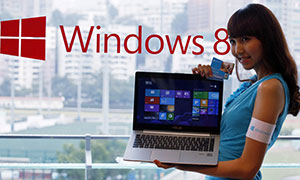It looks like Microsoft is ready to cry uncle on Windows 8. Since its launch in fall 2012, Windows 8 (and later 8.1) has defaulted to show the Start screen — the touch-friendly modern environment — first. Now, a pair of reports suggests Microsoft will soon update Windows to launch into the traditional desktop.
Screenshots of the supposed Windows 8.1 update for 2014 appeared on a Russian website, reported by Business Insider, and the person who posted them claims that, after installation, the new OS boots into the desktop. The Verge claims to have confirmed the findings, with sources revealing the forthcoming update will indeed make the desktop the default.
If true, the move would represent an about-face on Windows 8/8.1, if not an altogether surprising one.
Even before it officially launched, Windows 8 has been criticized for its bifurcated approach to computing, delivering both a traditional computing environment for mouse-and-keyboard setups as well as touch-friendly interface on the same machine.
In Windows 8.1, Microsoft introduced new features intended to appease critics, such as the option to make the desktop the default, the ability to share the same desktop background between the desktop and modern environments, and the infamous return of the Start button.
Critics still hammered Microsoft for misguided strategy, and the update did nothing to slow the the decline of the PC market, which fell 6.4% in the fall quarter. By comparison, Apple’s Mac sales have increased 19% year-over-year.
While Microsoft isn’t throwing out its new operating system with the bathwater, changing the default to the desktop is essentially an admission that it moved too fast in blending touch into its traditional Windows OS. After the change, many will watch closely how it affects interest in Windows 8 as a platform.
Although Windows RT isn’t mentioned in either report, it’s unlikely the change would apply to those devices. In the Windows RT 8.1 update, Microsoft even took away the desktop icon on the Start screen for Windows RT tablets, emphasizing their touch-first nature. That wouldn’t make much difference to the platform, since most manufacturers apart from Microsoft and Nokia (which will soon be the same company) have abandoned Windows RT.
It’s unclear if Intel-based Windows devices that are considered “tablets first” would be affected by the change.








